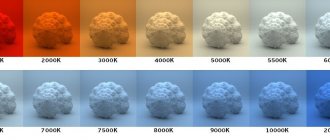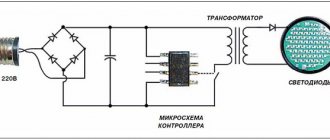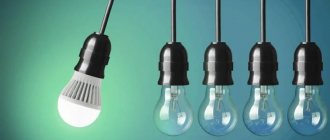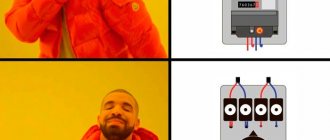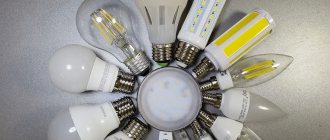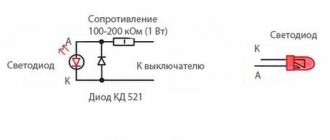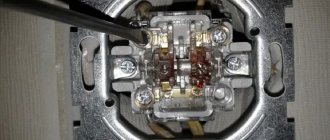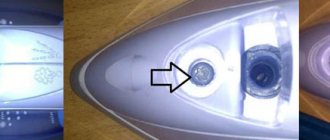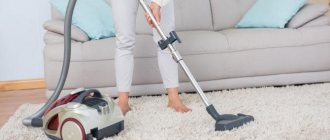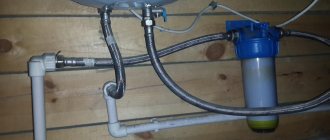The gel polish in the lamp does not dry when using counterfeit/low-quality materials, lighting equipment with low power or faulty elements, or when the lamp is heavily soiled. Professionals recommend first of all paying attention to the quality of gel polishes, especially since there is a list of materials that most often add difficulty to drying in a lamp - Noname, Lianail, Bluesky and others.
Any problems with poor drying of gel polish in a lamp can be solved: change the manufacturer of the materials, provide them with the correct storage conditions, use only powerful lamps, and so on.
Why gel polish does not dry in a lamp: errors in technology
Most often, gel polish does not dry in the lamp due to improper manicure performance (improper positioning of the hand in the lamp, a thick layer of coating, residual stickiness, etc.), problems arise among newcomers to the nail industry, because the masters are well aware of the possible provoking factors.
The hand is positioned incorrectly in the lamp
If the gel polish does not dry completely in the lamp, then you should pay attention to the position of your hand - the best option would be to dry each nail separately, but this takes too much time. Professionals carry out the drying stage of each layer taking into account the following points:
- Dry only the thumb separately;
- It’s better to place everything else in a lamp in groups of 2;
- Nails are placed to dry in the center of the light fixture;
- All fingers (except the thumbs) can be placed simultaneously in the lamp to “dry”.
And you need to make sure that your fingers are positioned inside the lamp, tightly adhering to the hard surface - even a slight misalignment can cause the gel polish to slip and not dry enough.
Too thick layer of gel polish
Each layer of coating should be thin, and novice artists try to hide imperfections in the treatment of the nail plate with a thicker layer. If there is too much gel polish on the nail, even the most powerful lamp will not be able to dry such a layer. Professionals recommend not to rush, but to apply 3-4 layers and dry each thoroughly.
An example of correct application of gel polish
Residual sticky layer
Often, beginning craftsmen complain that the top layer of gel polish, even after prolonged drying in a lamp, remains soft and pliable, although the overall polymerization of the decorative coating has taken place. This is how residual stickiness manifests itself - this phenomenon occurs often, and is corrected with a special liquid. But professionals warn that you need to use a cleaner for this manipulation, and not replace it with medical alcohol, acetone or nail polish remover.
If the general technology for performing a manicure with gel polish has been fully followed, but the top layer remains soft after drying, then you just need to moisten a cotton pad in a cleanser and wipe each nail plate - the coating will be perfect.
In addition to the reasons listed, you need to pay attention to the choice of gel polishes - there is an anti-rating for those that are difficult to dry in a lamp, even with the correct application of layers and ideal preliminary preparation of the nail plate.
Examples of bad varnishes
The most problematic gel polishes with regard to drying include:
- Noname made in China. Their popularity is due to their low cost, and even many buyers receive positive reviews about the quality of such products. But you need to understand that China produces counterfeits of well-known manufacturers and is unlikely to comply with technological processes during the manufacture of products. The result can be completely unpredictable; often the gel polish spreads, practically does not polymerize, and becomes covered with cracks.
- Gelish gel polish is a decorative coating from an American brand. In general, this material is famous for its high quality characteristics, but it also has disadvantages. For example, sometimes there are complaints from professionals that the first layer of this gel polish “curls” a little when drying, even if a branded base coat was previously applied.
And one more nuance regarding this brand of gel polish - the white color of the coating polymerizes very poorly, so you have to significantly increase the drying time in the lamp. It’s interesting that other shades of gel polishes “behave” absolutely adequately.
- Lianail is a well-known brand, its popularity at one time was simply incredible, because the quality-to-price ratio of gel polishes was simply ideal. Over time, complaints began to be received that when applying the next layer, the brush began to get dirty with the previous one, and the last one “stretched” behind the lint.
Even experienced craftsmen reported this, but a priori they could not disrupt the technology of drying gel polish in a lamp. Afterwards, professionals adapted to solve this problem by increasing the drying time of each decorative layer in the lamp.
- Ingarden - the range of gel polishes from this manufacturer is simply huge; the line always includes the most popular shades. But users often complain that when removing a sticky layer and applying a subsequent one, the previous one may shift. The solution to the problem is simple - you need to increase the drying time for each layer of decorative coating to 2 minutes. This, of course, prolongs the time of manicure, but it turns out to be of very high quality.
- Bluesky is a well-known brand, but with one caveat: light shades take much longer to dry than dark ones. In general, it is believed that the materials from this manufacturer will be easiest to use for professionals who can properly dry gel polish in a lamp with ultraviolet light.
How to do UV drying with your own hands?
Before you start assembling an ultraviolet nail lamp yourself, you should familiarize yourself with the following features of their launch systems:
- Electronic – characterized by great vulnerability to current surges in the network, lighter and simpler in design.
- Induction is heavier due to starting through the starter and choke, which make the device heavier; after switching on, the light flashes for a while, but is more resistant to mains current surges.
To assemble a UV lamp yourself, you will need to remove the base with the existing system, so it is better to take inexpensive illuminators.
List of required materials:
- Ballast as a ballast for limiting current of induction or electronic type. It is necessary to select this element so that its power matches the corresponding indicators of the lamp used.
- Fluorescent lamps.
- Food grade or self-adhesive foil is used to cover the internal cavity of the device to increase reflectivity.
- The housing is plastic, it can be used from another old device, just adapt it to the characteristics of the lamp.
- Cable with plug for connecting to a 220 V network.
- The control button can be in a standard form with an “On”/“Off” mode in the form of a push or roll type.
- Soldering iron.
Read also: Why do fingernails darken?
Instructions for preparatory work on assembling the ultraviolet lamp housing:
- Calculate the power of the device depending on the number of lamps used. If the lighting element has a power of 9 W, then when installing 3 of them in the device, the total power will be 27 W, with 4 lamps - 36 W, respectively. With higher power, the polymerization rate increases.
- Due to the ability to heat up during lamp operation, you should select a housing that will protect against burns. Thick plexiglass, wooden panels, casings from old unnecessary appliances, etc. work well.
- On paper, draw a diagram of the arrangement of the elements, calculate the number of wires and necessary parts, you should also decide on the appearance of the device, its shape and placement of the illuminators so that they do not interfere with your hands, do not hinder movements and can dry the gel.
- Think about how everything will be attached to the case, make all the spacers, panels, outputs and sockets for lamps, places for laying wires, an outlet for a button and a network cable.
- Cover the inner surface of the case with foil, trying to make it as even as possible, then the light will be better reflected and focused on the nails.
The procedure for assembling the electronic part of the lamp:
- Remove the base from the lamp, to do this, use wire cutters to separate the legs, remove the white base, prying it under the metal rim, after which 4 wires become visible, the first pair of which connected the starter, and the second pair went out to the legs;
- Connect the lamps to each other with wires, connect them to the ballast so that the outputs to the cord are located on one side, and the contacts for connecting the lamps themselves are on the other;
- Connect the cord to the electronic part and connect the button;
- Connect the assembled system to the network and check its functionality;
- Install the previously prepared “filling” into the body.
With certain skills, the duration of the process of assembling the electronic component of the device is approximately an hour. The case will take a little more time, it all depends on the chosen material, mounting methods, and imagination with the design.
Why does gel polish shrink, wrinkle, and curl up in the lamp?
If the gel polish shrinks, wrinkles, or curls after drying the nails in the lamp, then the reason must be sought directly in the material used:
- highly pigmented color - these will be bright, “dense” shades, in which a high concentration of pigment prevents the penetration of light rays, which prolongs the polymerization process;
- the shelf life of the gel polish has expired - it is usually calculated from the moment the bottle is opened (2 years), after this time the material not only dries poorly in the lamp, but also does not stick to the nails and can cause allergies (such residues are better used on tips);
- gel polish has not been used for a long time - the pigment in the bottle has already settled to the bottom, the composition becomes uneven, and this does not allow it to dry well, but if you carefully roll the bottle in your palms, the problem will disappear (it is strictly forbidden to shake it - bubbles will appear in the varnish, which then they will remain on the nails);
- the decorative coating was not stored correctly - the place should be dark and not hot so that the gel polish does not thicken and lies evenly on the nail plate.
Cheap gel polish, an outright fake of well-known brands, shrinks, curls and wrinkles in the lamp. That is why it is recommended to purchase truly branded decorative materials from suppliers with an impeccable reputation.
How to determine if a UV lamp has burnt out
The typical operating life of an average mercury UV lamp is 9,000 hours, which is several times shorter than modern UV LEDs. But even such a period is possible provided that there is continuous burning and the optimal characteristics of the electric current feeding the lamp are observed. In reality, the lifespan of the emitter can be much shorter.
Of course, mercury bactericidal lamps, including the Philips TUV15, which is very popular in our country, do not suffer from the fact that the phosphor can burn out, due to the lack of one in them. The reason for the loss of efficiency of the device lies elsewhere, namely, in the deposition of mercury vapor on the inner surface of the flask, which leads to a loss of its transparency. The difference in this indicator between new and emitters that have worked for a significant period of time can be seen even with the naked eye.
Another reason for the decrease in transparency lies in particles of tungsten evaporating from the filament, which, like mercury vapor, settles on the inner surface of the bulb.
As a result, the lamp works, but its efficiency rapidly decreases. Therefore, the emitter is considered unsuitable for use not when it stops burning completely, but when its efficiency drops to the limit level specified in the operating instructions.
Why does the lamp not dry the gel polish, it is soft after drying
If after drying the gel polish remains soft, but there are no bubbles or signs of wrinkling, then most likely the problem lies in the lamp. First of all, you need to check how correctly the light sources work - often it is enough to replace 1-2 light bulbs to restore the drying power of the gel polish.
Lamp quality
The lamp can be ultraviolet, light-emitting diode (LED) or hybrid. Professionals recommend choosing hybrid types of equipment, but beginners in the nail industry can use simple UV lamps. It is important that the lamp has a power in the range of 16-36 W, and what light elements it will be equipped with depends on the requirements of the master. The fact is that some gel polishes are dried only under LED lamps, while there are materials for drying exclusively in ultraviolet equipment.
Watch the video on how to choose a lamp for gel polish:
It should be borne in mind that on average a lamp is designed for 3 thousand hours of operation, but some equipment serves trouble-free for six months even with hyperactive use. Ultraviolet lamps wear out the most, so after 1 month of use you need to check the equipment and, if necessary, change the light elements. You can tell that the lamp's life has been exhausted by increasing the drying time of the gel polish.
Presence of contamination
The cleanliness of the lamp for drying gel polish is not only a demonstration of neatness and neatness to clients, but also the key to long-term, impeccable service of the lighting equipment. Even a slight layer of dirt and dust on the lamp can cause a decrease in the efficiency of drying the decorative coating. Professionals recommend wiping equipment daily with adhesive remover for medium levels of dirt and nail polish remover for heavy levels.
How to change it in UV with your own hands - step-by-step instructions
To replace an outdated or burnt-out lamp in the device, you must follow these steps:
- Turn off the device using a special button, if available, and disconnect from the network. Turn the box over, unscrew all the retaining parts of the base and cover of the case, for convenience, place the screws in a small closed container or matchbox so that they do not get lost.
- The device turns over into its usual position with support for the lower part of the block so that it does not fall off and the existing parts are not damaged.
- Carefully remove the top of the device. This should be done easily, without crackling, extraneous sounds, etc. The main thing is not to damage fragile lamps and electrical contacts.
IMPORTANT! As a rule, connecting wires are attached to the rear wall at the top of the case, leading to the control buttons from the board located on the base. Therefore, the cover should open “like a door” with minimal movement of parts of the housing so that the wires do not come off. Then it will be difficult to connect them without special equipment.
- A non-working or outdated lamp is identified and is very easily pulled out of the socket so that it does not crack in your hands, since the base is usually hidden inside a mirror structure in order to less scatter the emitted ultraviolet rays.
- In place of the old lamp, a lamp of similar power and dimensions must be inserted in order for the device to work correctly. The part is simply placed in the socket at the appropriate joints, easily pushed all the way so that the metal contacts are installed in place.
REFERENCE! Depending on the design of the device, to replace the UV lamp, you don’t have to disassemble it, but simply remove the damaged one and insert a whole lamp in its place. The main thing is that at this moment the device is disconnected from the network. It is easier to remove the lamp if you push it with your finger from the back of the socket, then you do not need to squeeze the glass bulbs. Unwinding the equipment reduces the risk of damaging the fragile glass in your hands.
- Close the top cover of the device so that the housing snaps into place. Typically, manufacturers produce plastic devices with self-locking box parts, and screws are provided for secure fastening.
- Before screwing in the device, you can check that the new lamp is connected correctly; to do this, you need to make sure that no wires are sticking out of the case, connect the equipment to the network, and press the power button. If the lamp does not work, you should turn off the device, lift the cover again and check the integrity of the installed lamp and its correct connection.
- All screws are inserted into place and screwed securely.
IMPORTANT! If the device body is plastic, and the screw socket on the body is not equipped with a metal insert (this is the case with most devices), you should control the degree of tightening of the bolts so as not to cut off the plastic threads or split the fasteners.
How to tell if gel polish is dry and how long does it take to dry?
Gel polish does not dry for long - it is enough to keep your nails in an ultraviolet lamp for 60 seconds at a power of 36 W, if the latter figure is lower, then the time can increase to 2 minutes. But you can understand that the gel polish has really dried by the following signs:
- the coating does not shine;
- the color of the gel polish is uniform;
- when turning the finger down with the nail, there are no symptoms of “floating” of the material.
Beginners can check the degree of dryness of the decorative coating with liquid to remove the sticky layer - if no pigment remains on the cotton pad, then the process has been successfully completed.
Impact and description
The design of a standard lamp for drying nails is extremely simple. This is a housing with built-in lamps inside, which is equipped with a control panel on the outside. There are more bulky models that allow you to dry both hands at once. Such options are most often used for professional purposes, because the cost of the equipment is quite significant.
Compact models perform their functions perfectly at home and are more accessible for purchase for personal use.
Also, depending on the model, there may be universal devices equipped with a timer, a fan for cooling (and more comfortable drying), a sound signal and other additional accessories.
The design differences lie in the very principle of exposure, or more precisely in the lamps used for drying. The first generation of devices includes ultraviolet lamps, the next models use the latest LED lamps. Often, it is these differences that cause a clash of interests, as well as the problem of choosing a suitable device. To study these two options in more detail, you need to familiarize yourself with the pros and cons of both devices. You can purchase such a lamp already in a ready-made set of gel polishes for beginners.
Video of an ultraviolet lamp for drying nails:
Why doesn't the base or top coat dry?
The base and top coat may not dry if the technology of the preparatory stage is violated, because the base rests on the natural nail plate. The most important thing is to thoroughly degrease the surface so that the rays of ultraviolet lamps can penetrate the base layer and “glue” it to the nail with heat.
The top does not dry often when:
- use of low-quality materials;
- the use of LED lamps (the top dries only under ultraviolet light);
- the time the hand is in the lamp is too short.
Possible causes of malfunction
The use of ultraviolet radiation for manicure is not accidental. This is not due to any special marketing ploy of beauty salons and similar institutions. The fact is that new substances have appeared to cover nails - polymers. They don't just dry out as the solvent evaporates. Their polymerization occurs. To speed up this process, it is not blowing or high temperature that is needed, but light with a certain wavelength.
Due to the special properties of these polymerizing gels, it is the ultraviolet light bulb that accelerates the process, and not any other light. Therefore, repairing an ultraviolet lamp for drying nails in large cities where there are many beauty salons is a very common occurrence. Today, among such devices there are many Chinese products. For this reason, certain problems occur. Very often, a UV nail lamp comes in for repair, the electrical circuit of which, according to the owner, is lost. But most likely it was not there from the very beginning.
To obtain the minimum cost, Chinese manufacturers save on everything, including accompanying documentation. So the repair of UV lamps turns almost into a detective story, in which instead of searching for a criminal, it is searching for a malfunction. To repair such a modern electronic device, you must:
- check the lamp;
- find out the performance of the ballast.
The differences between an ultraviolet lamp and a regular lamp are indicated on the nameplate.
Common malfunctions encountered in an ultraviolet nail dryer are as follows:
- after the power is turned on, the light does not appear;
- after a short period of normal operation, the light flashes;
- The light bulb turned on, worked for a while and turned off.
There may be other manifestations of malfunctions. However, either the lamps or the electronic filling of the ballasts are to blame for all the troubles. Almost all manufacturers of such devices use energy-saving lamp circuits in them. Therefore, components of energy-saving lamps can be used, for example, if you need to repair a UV lamp at home yourself:
- You need to start by studying the electronic circuit of the ballast and its connection to the lamp. But there are dryers with several light bulbs.
- If the light does not turn on, the fault is either in the ballast or in the lamp itself. It has two electrodes on each side of the flask. It is necessary to check the resistance between them with a tester so that the remaining elements of the circuit do not affect this test. If there are no readings from the device, it means that the electrode spiral is damaged. You must either replace the lamp or try to adjust the ballast to restore the device's functionality. Information on how this is done can be found on the Internet.
- If the light blinks, it means the lamp is working, but the ballast inverter is unstable. Perhaps the transformer winding is broken, or one of the diodes does not hold reverse voltage. We must look for this provoking element. This is a complex malfunction, since you will have to check everything in the circuit.
- It is also impossible to clearly name the cause of the malfunction when the light goes out periodically. Additionally, in comparison with the previous case, one can indicate overheating of the transistor in the inverter. But if it worked fine before and started to heat up too much, then something is wrong with it. For a silicon transistor to operate incorrectly due to overheating, its temperature must be above 70 degrees Celsius. And this is easy to determine, as they say, “by touch.”
Common UV lamp inverter ballast circuit
It is difficult to name the exact causes of malfunctions
When searching for them, we advise you to pay attention to electronic components based on their reliability. The most resistant are resistors and non-electrolytic capacitors
Among semiconductor devices, diodes are more reliable than transistors. If the transformer is well made, it is very reliable. And one more tip:
Repair UV light inverters only using an oscilloscope. Without an accurate understanding of the pulse parameters, it is almost impossible to make a good repair for a complex fault.
Gel polish does not dry in the lamp: reasons and ways to prevent them
The most common reason that gel polish does not dry in the lamp is that its expiration date has expired.
The photo shows an example of expired gel polish
Manufacturers indicate that their products can be used for 2 years, but this period should be counted not from the date of manufacture, but from the moment of opening/first use. It is also important to store gel polish correctly - away from heating devices, in a dark place.
These factors most often “work” on those varnishes that have too extravagant shades or are not popular. It will not be possible to solve the problem of expiration date, but a long break in the use of a particular material makes it necessary to carefully roll it in your palms before opening the bottle. It is strictly forbidden to shake such varnishes - the pigment will be distributed unevenly in the varnish, as a result the coating will be of poor quality.
How to apply thick varnishes correctly
An example of step-by-step application of gel polish.
Many gel polishes contain a large amount of pigment - their colors are rich and bright. Professionals emphasize that such material should be applied with an absolutely dry brush and in an extremely thin layer - in general, it is better to apply 2 ultra-thin layers and dry them step by step than to get by with one “thin” one, reducing the time of the entire manicure.
If a thin layer was applied, but the gel polish still shrank and wrinkled after drying in the lamp, then this means that the thickness needs to be reduced. The application of ultra-thin layers of coating of highly pigmented materials also reduces their consumption, and at the prices of branded products this is relevant.
How to care for dryer lamps
You need to clean the equipment every day after finishing work, but change the light bulbs much less often - no more than once every 5-6 months, if you work with them every day and for 2-3 manicures.
In order for the gel polish to dry completely, you need to monitor the condition of the light elements - simply look inside the structure and identify those lamps that shine weaker or have gone out completely. This applies to all types of equipment, especially hybrid ones - if the master dries the coating for 60 seconds, then if only one element fails, the time should be increased. And if this does not happen, then the gel polish may not dry completely under the same working conditions.
Go
According to the instructions for the resin, the hardener for it is UV light with a wavelength of 400-405 nm. A proven solution would be to buy a branded dryer for the printer, but the price is not at all understandable - with a printer budget of 32 thousand rubles, paying another 23 for a box with LEDs is kind of a barbarity.
The solution is to make a lamp yourself from available components. Were purchased:
- UV 3W LED Unit - 19 pieces for 68 rubles (bought offline in my hometown, apparently these are from Ali)
- LED driver stabilized for a current of 600 mA at 22-38 volts (spoiler: it immediately died and was replaced with this one) - 450 rubles
- Table lamp ERA NL-202 black - the quality is below the baseboard, but suitable for cramps - 1299 RUR
- Radiator in Chip and Deep - 170 RUR
- Hot melt adhesive - 190 rub.
- 2 meters of fire-resistant cable - 60 RUR
Since our lamp has the shape of a boat, we adjust the radiator under it:
We disassemble the lamp itself and throw out all the guts:
The first option for arranging LEDs: 9 pieces in series connection - total consumption 32.4 volts 600mA.
We prepare jumpers:
Degreasing the radiator:
Apply glue:
We drill the finished radiator with glued units - we will use the remaining standard holes for self-tapping screws:
Let's get contacts:
We solder everything sequentially:
Done: try on the driver, which fits exactly into the standard place of the lamp electronics
What happens if you overdry gel polish in a lamp?
In general, there is no such thing as “over-drying gel polish in a lamp”, because after the decorative coating hardens, all reactions stop, further influence of ultraviolet or LED waves does not have a negative impact on the final result. Even if the nails were in the lamp for 4 minutes instead of the required 2, then subsequently there will be no chips, cracks or a decrease in “use time”.
If the gel polish does not dry in the lamp, then you need to look for the reasons in the material itself, the lamp and the rules of the process technology. The process can be affected by low power of lighting equipment, low-quality or too light/highly pigmented varnish, severe contamination of the lamp, lack of a degreasing stage of the nail surface and other factors. When eliminating “provocateurs”, the process of drying gel polish in a lamp can be adjusted to perfection.
LED lamp
This type of lamp is more modern.
Ultraviolet radiation comes from the LED. This technology allows the gel to harden in half a minute. Drying time is significantly reduced. The varnish is applied in a similar way, in three stages, between which drying takes place. LEDs, unlike UV lamps, are practically harmless. In addition, they work much longer. The service life of such a lamp can reach 40-50 thousand hours.
Dryers with this type of emitters are slightly more expensive than their UV counterparts. LED lamps, as a rule, cannot be replaced due to their durability. If the lamps burn out, the device is simply thrown away.
Main differences:
- UV uses a fluorescent light bulb, LED uses a light emitting diode;
- The UV lamp has a shorter lifespan and is harmful to the skin and eyes;
- LED does not work with all types of gel polishes;
- LED dries much faster;
- Low power UV units do not dry the gel properly.
Advice! Experienced users know that for optimal performance it is better to choose a hybrid device that contains both LED and UV technologies.
How to check functionality
Measuring device – multimeter
Since the design and operating principle of such products are similar to fluorescent light sources, the verification algorithm here will also be similar. Here, you should also use a multimeter as a measuring device.
To check, you should carry out the following manipulations:
- disassemble the lamp;
- remove the light source from it;
- connect a multimeter to it and determine whether voltage passes through the lamp.
If a value appears on the device display, then the lamp is functioning properly and the cause must be looked for elsewhere. But if the output voltage is zero, then the reason lies precisely in the light source. In such a situation, the cause may be a broken connection. If this is the reason, then the contact can be replaced in place yourself. But if the fault lies inside the glass bulb, then nothing can be done about it. You will have to buy a new lamp and install it in place of the damaged one.
What else?
Let's note some of them:
- a special spray - usually a bottle of oily liquid. A fresh manicure must be completely sprayed with this composition and wait 5-10 minutes;
- special oil for drying. Sold in a bottle with a dropper. It is enough to apply a drop of oil to the nail plate, spread it over the entire surface, after 5 minutes the coating will harden;
- fan drying. This is a drying option with a special small fan, inside which fingers with “No Light gel” varnish are placed and air is blown through them;
- drying with clear varnish. Regular varnish is applied two minutes after applying colored gel polish. After 5 minutes the coating will harden; this method increases the durability of the manicure.
Fan for drying varnish
UV lamp processing
Preventive maintenance of irradiators is carried out within the period specified for each model and includes several processes:
- Removing dust from the emitter bulb and all surfaces of the device;
- The filter (in recirculating sterilizers) is changed quarterly, or earlier if there is a critical degree of contamination. While performing this manipulation, the grids holding the filter should be disinfected by wiping them with a special solution or immersing them in it.
- Disinfection of the device is carried out in accordance with the requirements of MU287-113.
- Before turning on the device, its external surfaces, lamps and reflectors are processed in accordance with the same guidelines.
Why and where are UV lamps used?
Ultraviolet lamps can be seen almost everywhere today. Its widespread use is based on the following positive qualities:
- creating the light spectrum necessary for the growth and development of plants and animals. This lamp is often used to illuminate turtles and amphibians, as well as indoor plants;
Note! If you plan to organize ultraviolet illumination of turtles (or other animals or plants) at home, then you need to choose only those models that are allowed to work in close proximity to living organisms.
- the ability to kill pathogens and pathogens by disrupting their DNA molecules. This property of ultraviolet products is actively used for medical purposes to disinfect wounds, rooms, air and water;
Disinfection of the premises
- in the cosmetics industry. Many masters use such lamps for drying nails. In addition, they are used for nail extensions. Remember that for nails, just like for turtles, you can use closed-type lamps that are allowed to work near living organisms. Such lamps allow nail manipulations to be carried out at a faster rate, stimulating the rapid addition of substances applied to them;
- long service period. Even a lamp designed to illuminate turtles will last a long time if installed correctly;
- mechanical reliability of the structural organization of the lighting fixture.
But besides this, we should not forget about the danger that such products pose if used incorrectly. The danger here is:
- There is mercury vapor in the flask. If the integrity of the glass flask is damaged, they are released into the surrounding space. Mercury can accumulate in the human body and cause chronic diseases (with sufficient accumulation);
- In addition, fragments of the flask are also dangerous, especially for small children and animals (turtles). They can cause microcuts through which pathogens can enter the human body.
Also, violation of operating rules can lead to premature failure of the lamp.
Features of UV lamp
Undoubtedly, buying a ready-made UV lamp is easier than making it yourself. However, homemade ultraviolet drying has some advantages:
- the ability to make a lamp at your own discretion in shape and design;
- the amount spent on the necessary elements for the dryer is much less;
- confidence in the high-quality assembly and safety of the device, provided it is manufactured correctly.
The body for the dryer is made of plastic by injection.
This design of the dryer helps to better dry the varnish, especially near burrs. The inner sides of the device must have a special reflective material. For a homemade dryer, food foil is suitable.
Almost all UV lamps have a timer. On devices with low power there is only one button, most often for 2 minutes. More expensive models have more than one timer and touch panel.
All means are good
There are several ways to quickly dry gel polish without a lamp, let's look at the main ones in descending order of effectiveness:
- ice water. Drying with plain water is suitable for light-insensitive gel polishes. Place freshly coated hands in very cold water (you can put ice) for 15 minutes, the gel polish will set. You can polymerize the coating by keeping your hands in the freezer for 2-3 minutes;
- cold coating. Keep the gel polish in the refrigerator for about 20 minutes and immediately apply it to your nails; it will dry several times faster;
- the catalyst (usually cyanoacrylate based) can be in the form of an ointment, spray or gel. A couple of minutes after applying the varnish, drop one drop of the substance onto the nail plate and spread over the entire surface. The varnish will dry in 1-3 minutes;
- olive oil. Apply two or three drops to the plate, spread over the entire surface and wait about 5 minutes. Then rinse it off with a stream of cold running water;
- sunlight - dry your fingers directly under the sun's rays, this is a long drying process;
- a blue medical lamp can dry gel polish, but the process is lengthy;
- regular hairdryer. The result will be if it is powerful enough and there is a cold blowing mode. Blow freshly coated fingers with a powerful cold jet for 5 minutes; the gel polish should be a single layer. The method is long and the quality of drying is low.
What are the problems at work?
Like any lighting product, ultraviolet lighting devices also fail. Failure can occur for a variety of reasons:
Ultraviolet light
- tungsten filament burnout;
- failure of certain elements of the lamp device;
- contact burnout;
- failure of electrodes;
- damage to the elements of the lamp itself.
In addition, such a lamp may not work due to faulty electrical wiring in the room, as well as failure of sockets or switches. If the problem lies in the ultraviolet lamp itself, then you can check this with a multimeter. If the problem is not there, then you need to look for another reason. The following indicates that the light source is not working properly:
- complete absence of mercury vapor glow when the lamp is connected to a power source;
- flashing during operation. Moreover, blinking can occur both rarely and quite often;
- various lighting effects that are not typical for the normal operation of the lamp;
- the presence of an uncharacteristic odor during operation of the lighting device (for example, a burning smell). It appears in a situation where there is a burnout of the wires inside the lamp body.
If such effects occur, the first thing to check is the performance of the light source.
